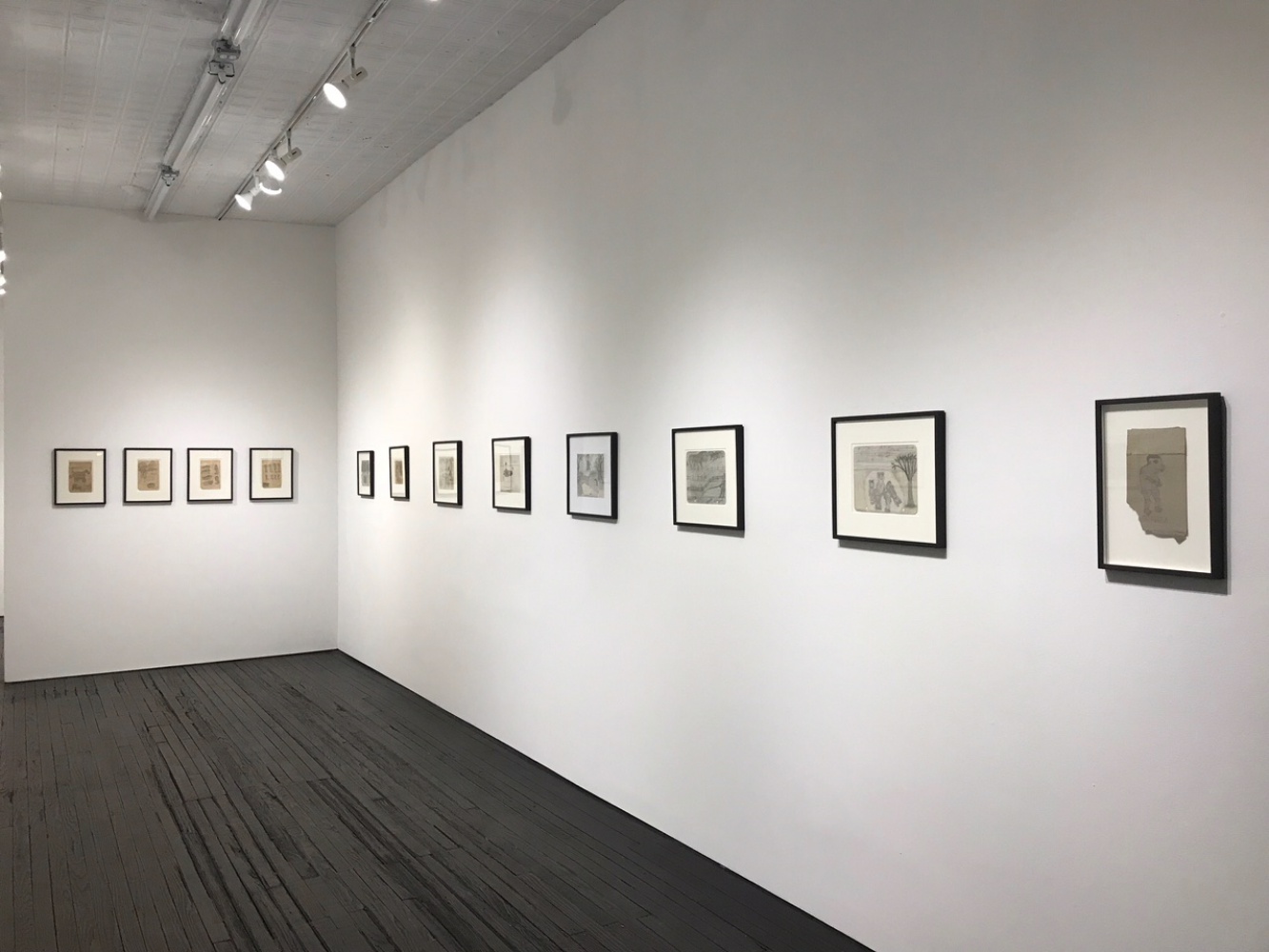Pearl Blauvelt
February - March 11, 2018
installation images selected works thumbnails

Press Release
Born in 1893, Pearl Blauvelt lived reclusively in a small house in Northeastern Pennsylvania, where she produced an abundance of small pencil drawings on lined notebook pages. Around 1950, Blauvelt left her home and the house remained empty until 2000, when two artists purchased it and discovered a box filled with more than 400 of her drawings. The thirty pieces in this exhibition reveal a personal world indoors and out, including pastoral landscapes, Biblical scenes, well-furnished interiors and consumer products found in country general stores or in mail order catalogues.
Her gridded compositions and repetitive motifs reveal an instinctively playful sense of design while her pragmatic draftsmanship conveys a poetic, often humorous feeling for ordinary things like spools of thread, blankets, and stockings. With their densely hatched marks and subtly muted colors, these compact drawings envision a world populated by prosaic things she wanted such as clothes, furniture, houses, cars, and money, but also expand outward into a fairy tale domain of her own devising.
In her architectural drawings, rooms and buildings and their human occupants are rendered semi-transparently as if seen by someone with x-ray vision. Perspectives are disorientating; walls are flattened and relations of size between big and small objects are ignored.
Bauvelt's drawings hark back to the 19th century and the old weird America of isolated individuals in rural areas receiving and responding to intermittent transmissions from cosmopolitan centers. Mixing the empirical and the allegorical, the mundane and the cosmic, Blauvelt (1893-1987) left a fascinating record of her own life and times.